Don't wanna be here? Send us removal request.
Text
Points of reflection on cyborg
"What "cyborg" as a text has done?" - on the self-unconsciousness of different forms of techno-optimism
"What do the researchers mean when she talks about xxx (embodied/situated/bodily)" - on upbringing and limitation; cyborg as a prism of Haraway's multiplicity
"Is partial connection/ecology of epistemology really possible?" - positionality and ecology of epistemology
"How you design/research it is not how capitalism will take from it" - on the role of design and design research & how to bring critical inquiry to the fore of design practice
"Who am I" - on the struggle of finding own position as a Chinese/Female/Heteronormative/Mom/Liberal left/Interdisciplinary researcher
0 notes
Text
Aesthetics is itself the violence
Yesterday I was listening to a podcast “Between the Covers” between David Naimon (a co-author with Ursula Le Guin) and Dionne Brand on her new book *Salvage: Readings from the wreck.* It was a casual listen, so I didn’t pay much attention. At one point, David was asking a question to Dionne:
“The first involves a quote you share of the Kenyan literature professor and post-colonial scholar, Simon Giacondi, who says, the aesthetic can never be sutured against or cauterized from the “colonial event”. And you explicitly take this thought of his a step further. You propose that the colonial event *is* the aesthetic. What is pleasing, what is beautiful in the text isn't inseparably sutured to the violence, but *is itself* the violence.”
In the conversation they were talking about these aesthetics of good manner, civilisation, beautifully composed proses as the samething, the other side of slavery and the bodily nature of how things actually work.
I didn’t pay much attention at the time of listening - I was in the gym and running on a cross-trainer.
But today, when I was thinking all day about what to talk about in a mini lecture to interaction design students, I thought of the example Bow once used when talking about technology and feminism, how platform economy turned into gig economy, which puts the welfare of people like Uber drives and delivery men behind the scene. I suddenly made the conneciton to the “aesthetics is itself the violence” statement.
If the whole world, particularly the place where I have grown up, was lured by the dream of modernization, aesthetics, or illusion of clean, neat, organized, fast, convenient, hassel free definitely played a role. But when it actually arrive, there is always a dark side, that was hidden behind the original promise. These promises are exactly like the “Mr. Darcy”, or any decent English man, Mr. Rochester in my once favourite Jane Eyre! Decent, jobless, living on a big fortune passed down. When you were young this seems romantic and perfect, while only much later in time you can question. How is it so?
And technology…. isn’t it doing the same glossing over? Telling you “technology helps to make things faster, better, hassel free”, yet someone still have to cook the meal, somebody to deliver in a rainy or stormy night, Somebody has to take the burden of old electronic trashes, dig up forest or insert wield solar panels, or wind turbines (which Niall Williams is not complaining enough about). Glossing over to create the propoganda, and the future will never arrive.
The future does arrive, alienated. One end is clean and efficient, all logical and nice, the other end is dirty and messy, but it’s veiled behind, nobody sees it. Then is the cut in the middle. “Try to get to the nicer end”! Everybody shouts, move faster, read faster, type faster…Who wants to be trained into, tortured into becoming caring, when outsourcing is an option?
So here we are, the mind-body split ever so vast. All the nice things to the mind, so we could forget about the body. I wonder how I can show people that… by standing, unmoved by the craziness moving forward, FORWARD. Hey, thinking by doing, and doing thought actually feels great. Small is actually beautiful. Subsistence is not all about giving up.
Will anyone listen?
1 note
·
View note
Text
Kids talk - who created nothing
WA: Mom, who created nothing?
M: Wow, good question, this can be so philosophical…(as everything is with mom. )
WA: (Pointing to the air) there is nothing
M: Is there nothing? There is air.
WA: Air is nothing.
M: If something is nothing, then it makes no difference if there is the thing (nothing) or there isn’t. Is it the same if there is no air?
WA: It’s the same.
M: So If you live on a planet that there is no air?
WA: Phew… Sky is nothing
M: If you live on a planet there is no sky… (pushing his head down toward the ground)
W: Then the sky is nothing.
M: Then is the ground (the sky now) nothing? There is concrete…
M: So nothing is always in contrast with “something”…when you say (pointing to the grass) there is Gui Zhen Cao (pointing to the ground next to it) there is nothing. You say (pointing to a bird) there is a bird (pointing to the sky) there is nothing.
WA: humm…
M: Have you been learning Tao Te Ching? Remember it says there is no “high” if there is no “low”, no “fast” if no “slow”, no “fat” if no “slim”…
WA: (a few seconds trying to understand…. getting to the last point..) Hey MOM!
WA: So what is nothing?
M: Nothing is nothing.
WA: What is nothing?
M: “Nothing - n-o-t-h-i-n-g”
WA: @_@
(There has been some interesting impression made by a random book Trespassing on Einstein's Lawn on nothing…related to it is the complicated, political laden term Creatio ex nihilo (created out of nothing) There was nothing when colonizers arrived in America… Hong Kong was a “barren rock”. What is nothing? Who created nothing?)
0 notes
Text
Water, city, and capitalism
Before leaving for Fussen to get close to Alps, I spent my last morning in Augsburg learning about the water management systems. The UNESCO information center near the Town Hall Square provided great information about the elements and overview, many of the introduction and videos are also avaiable online (https://whc.unesco.org/en/list/1580/), and I was very lucky to discover a poster introducing me to a free audio tour actually walking across the city and to the city forest to see the different elements.


I didn't expect this walking tour to stur up so much. A few strings of thoughts involve:
The canals in Augsburg were used as hydropower for mills, which provide power for a lot of small scale industries. This leads to the association of the rise of capitalism in other European cities like Florence, and surprisingly Augsburg was also one of them. Sitting at the bank of Lech near the Hochablass (the water diversion dam), I suddenly realized the significance of the Textile and Industry Museum in Augsburg (which I didn't have time to go) is not just about design, but captures an important stage of capitalism.
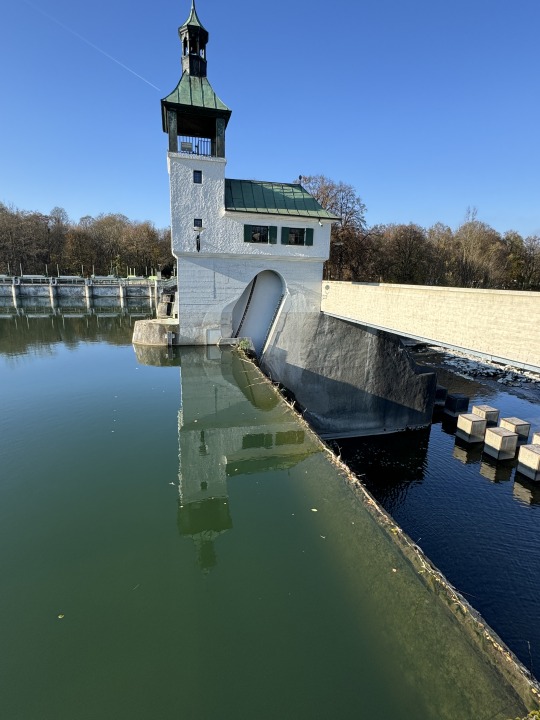
The audio tour talked about the abundance of water as a prerequisite of cities. While walking along the city moat and listening about defence as one of its functions, I suddenly recalled my hometown Xi'an, which back in history was also surrounded by water (not anymore). And coincidently, there is also a big mountain range (秦岭 Qin Ling) not far away from my hometown. This similarity was confirmed by google map


What does technology of water do in the different paths taken by China and Europe cities? This morning I searched in English about the waterworks in my hometown, and found out that the earliest Canal in China can be traced back to 246BC built near my hometown... (https://zh.wikipedia.org/wiki/%E9%83%91%E5%9B%BD%E6%B8%A0) it was mainly to build a blood vessel like watering system supporting agriculture, and played crucial role in supporting Qin Dynasty's conquering of China. Why the divergence between agriculture and capitalism? Does it have anything to do with colonialization and the predatory culture? How does this difference relates to a different human-nature logic? How modernity has disturbed this human-land relationship, and where to go from here?
Later I was able to find an illustration of Augsburg from Fernand Braudel's famous Civilisation and Capitalism!


I was very envious of the city forest in Augsburg. Particularly when I learnt it was the center of early capitalism... How comes the place where capitalism originated still have such a wonderful forest without human disturbance that can provide clean drinking water without filtration (!), while the place imported the logic had massive environmental degredation and lost contact with nature forever?
(TBC)
4 notes
·
View notes
Text
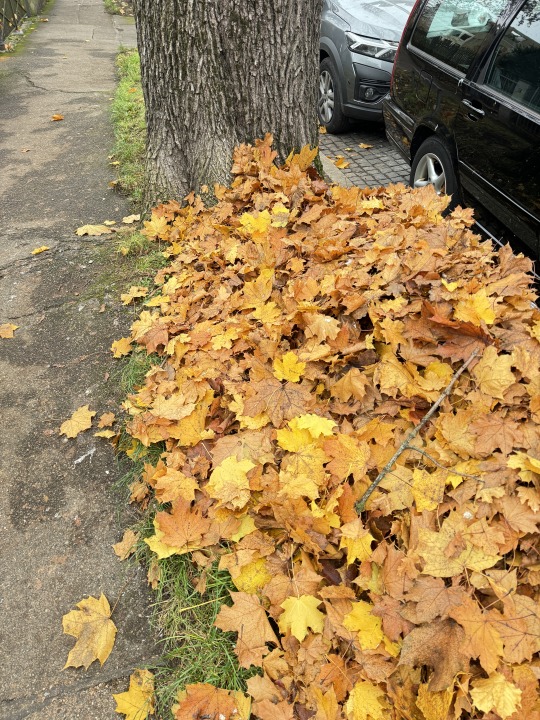
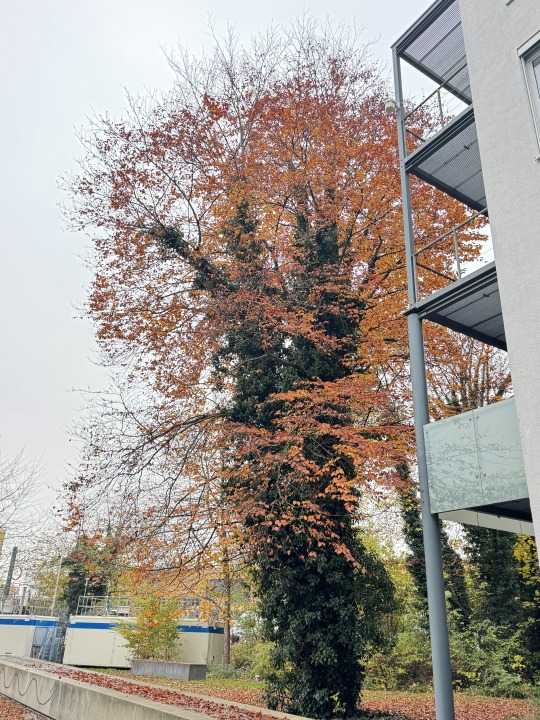
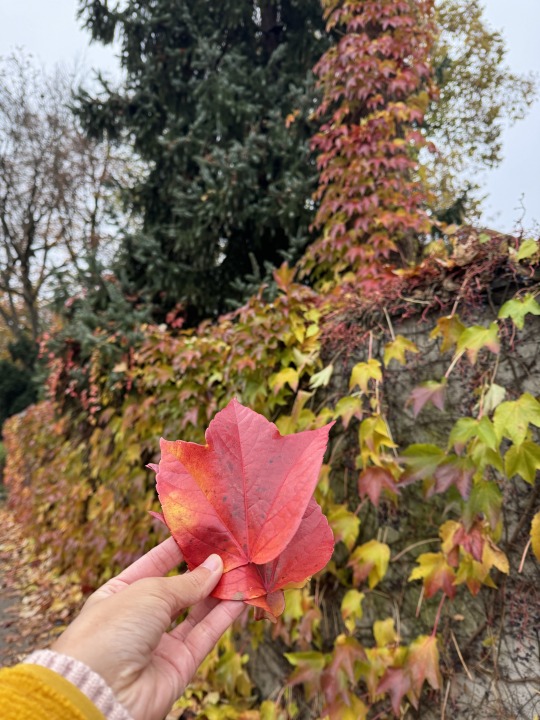
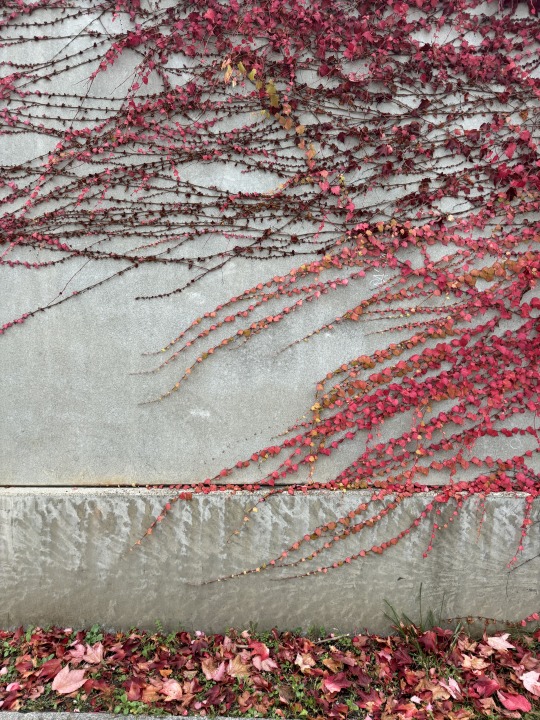
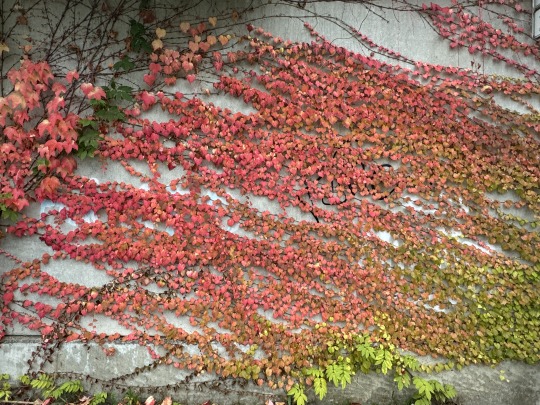
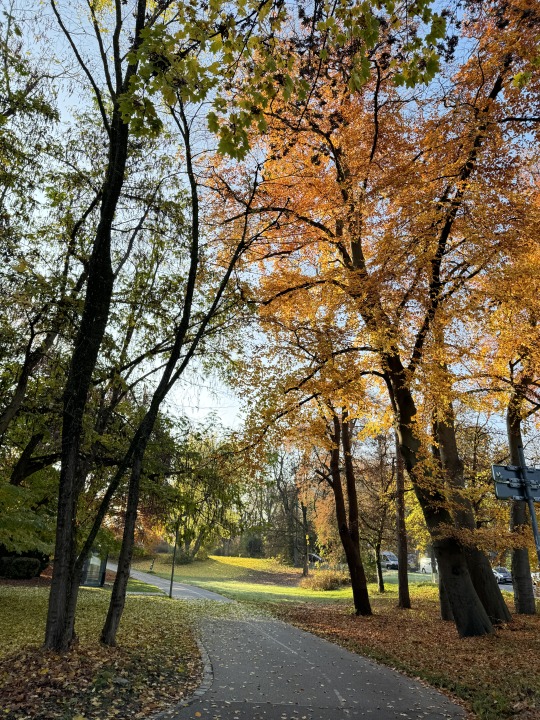
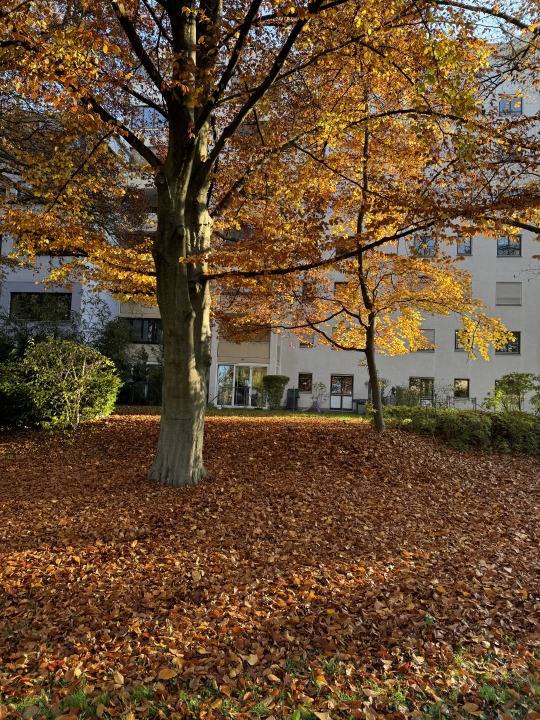
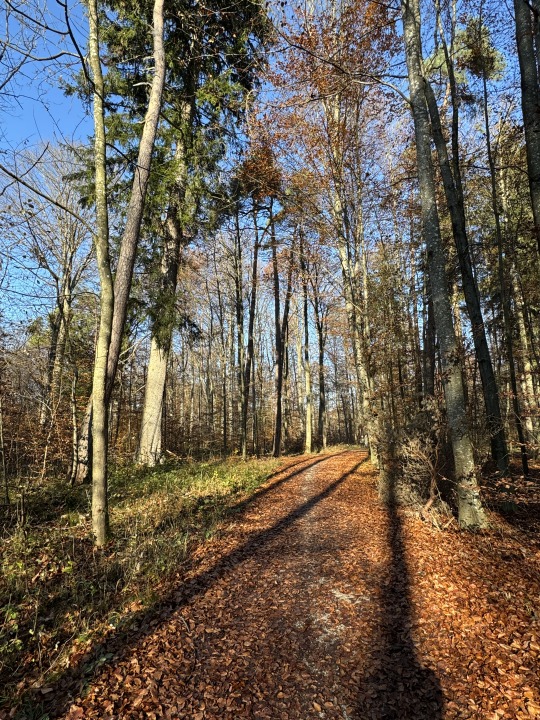
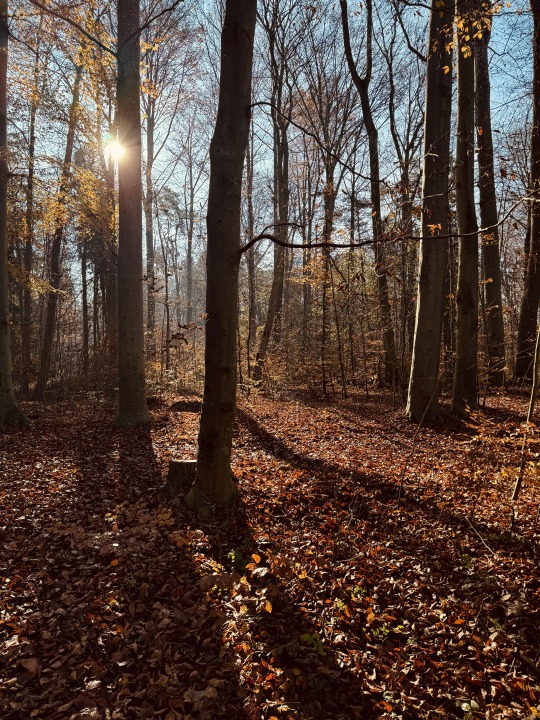
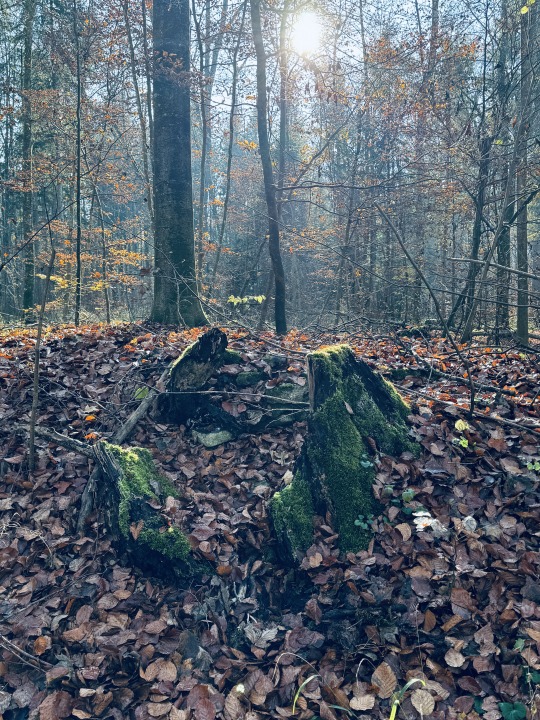
Meanwhile, the late autumn in Augsburg is simply stunning...
0 notes
Text
NERD 6th Sense
Earlier this month (November 2024) I flied to Augsburg, Germany to attend the NERD conference hosted by BIRD. NERD - New Experimental Resarch in Design. BIRD - Board of International Research in Design. Conference is always exciting - someone as introvert as I am could suddenly turn into hyper mode. But this one is particularly interesting for its single track setup - only 12 speakers in the course of two days, full attention from the audience promised. Because of this, I was able to talk to almost all speakers, most of the organizers personally and made a few new friends.

A few observation / highlights:
What is special about design research? My interest in NERD/BIRD largely started with reading of Prof. Wolfgang Jonas' theory on Research through Design, informed by systems thinking. In the opening speech Prof. Jonas reiterated his proposition for design research as "muddling through" (See the "preface to the new edition" in Jonas (2024)). This playful, experimental, "not taking it too serious" attitude and a higher tolerance and acceptance of uncertainty in the process of research is one of the features in almost all presentations. The framing of this often open-ended process, however, can differ from project to project. Often it is easier to present a project in the form of final outcome, for example, the cultivation of bacteria from nearby plant in Emma's case (1), the speculative design in Veronica's case (3), or the systems thinking + speculative design curriculum in Ranjit's case (12). The research process, or how such research is achieved, still largely escapes capturing. This will lead to a focus on the quality of final outcome, or give rise to the questions like "why it's design's job, not material science's?". Fundamental to all projects mentioned above, I think, is a reconsideration of the relations between "product" and human. Emma's project perceives a kombucha bacteria not only as a living organism but also place-based, with its geneaology and symbiotic relationships with plants, people, culture and practice. Veronica's speculative design of silkworm-woven artificial heart, on the other hand, could be viewed as the embodiment/materialization of a reevaluation of human-silkworm ethics. In this light, my research can also be seen as establishing a responsive / corresponsive relationship between human and more-than-human through a process of recuring urbannature encounters. Using the concept of "escape" employed by Tobias Rees (2018), it is important to articulate what the new and emerging is escaping from (the linear historicity, the natural evolution of a certain narrative...), and why is it important.
Systems thinking: I had the fortune to talk to Prof. Jonas and Ranjit Menon and exchange our ideas on systems thinking. Of course it still means different things for different people, but for me more and more systems thinking becomes a first-step departure from mechanic understanding of the world. Understanding of the movement of the world through elements, causations and feedback loops can be liberating at the start of the journey and limiting at a later stage, and at that time the mind will be better prepared to embrace complexity and chaos. So the combination of systems thinking and speculative design in Ranjit's case is really interesting, providing both a research tool for designers and a scarfolding for views. Also on systems thinking, it was encouraging for me to reach agreement with Prof. Jonas on our focus on irreducible complexity of relality. A process view of the iterative process of wayfaring seems unavoidable, and I'm glad that Prof. Jonas find my description of the process "convincing".
More-than-human: On the topic of non-human / more-than-human, there are a few interesting presentations/discussions. Marta's work (2), although focusing on mycelium, seems still captivated by the tendency of anthropocentric control. Do we listen to "others" just so they could finally conform to our will? Veronica's work (3) poses interesting ethical question: if killing is unavoidable, what is the use that is worth the killing (of hundreds of silkworms)?Elias' robot surprisingly is positioned to escape anthropomorphism - what does otherness really mean and can it be translated to a human sense (with reference to sci-fi aesthetics)? (I think it will be actually interesting to explore the affective relationship by writing an autoethnographic piece ...Elias? ;). The quick exchange with Michelle Christensen was enormously encouraging in that we both agree design's material intervention/exchange/worldmaking is still largely undervalued in new materialism theory. How can design research collectively make our voice heard?
Affective stitches: Pamela's feminism informed stitches (7) and Valarie's proposition of industrial-level repair designer (8) reminded me of the inspiration I got from visible mending workshop in Rotterdam. There is something about reflexivity, time, embodied thinking, and attachment to materiality (Hirscher, 2024) in the act of stitching and mending, though I don't know yet what connection it will make with my research...
Philosophy of design: The last presentation by Luz Christopher Seiberth & Robert Fehse was a unique collaboration between philosopher and product designer. Their presentation in the form of a philosophical essay may appear to be arrogant to some, but I find it powerful and deliberate. The dance between properties (material features) and perspective (subjective perception) can be ellaborated with many other pairs of terms, but the idea of specificity defines and develops concept is an intresting one to dwell in. The question asked by Alias in the Q&A question is particularly interesting for me: if recipe cannot be strictly and identically followed every single time, are we already designing by following the recipe? For me, this gap, or grey space, between the concept and abstraction, which can be easily equated with each other as in a math equation, and the specificity which is multiple and distinct every single time (think of an apple, there are never two apples that are identical) is particularly interesting. A multiple understanding of reality/materiality to me sits in the central of design. On a euclidean plane, the shortest distance between any two distinct points is the line segment joining them. But what are the other possibilities in the space that is wide open?
Feminist camp: Although there is no panel dedicated to feminism, the influences of feminist thoughts are either claimed or visible in many presentations (1, 3, 4, 7). The topic of gender was also slightly touched upon in Uta's session (particularly in the questions in Pamela's presentation regarding the stitch circles, whether the dominance of female participants introduces bias, or is a homage to the female mutural support legacy in many cultures). Despite the constant influence of feminist posthumanism theories in my research, for pragmatic reasons it sometimes takes a backseat. It was interesting that the role of "body" or "bodily knowing" in my research seems to get more attraction than RtD, and female and male audience seem to have very different reactions. At a point I have to bring in my experience as a mom to help explain that by "body" i don't mean bodily physicality, but a different way of sensing-knowing. Should I take a stronger claim in my feminist new materialism position? How does it help? I haven't made up my mind. But on the side Lisa (4) offered a powerful manifest on identity. I wonder how male audience feel about it...
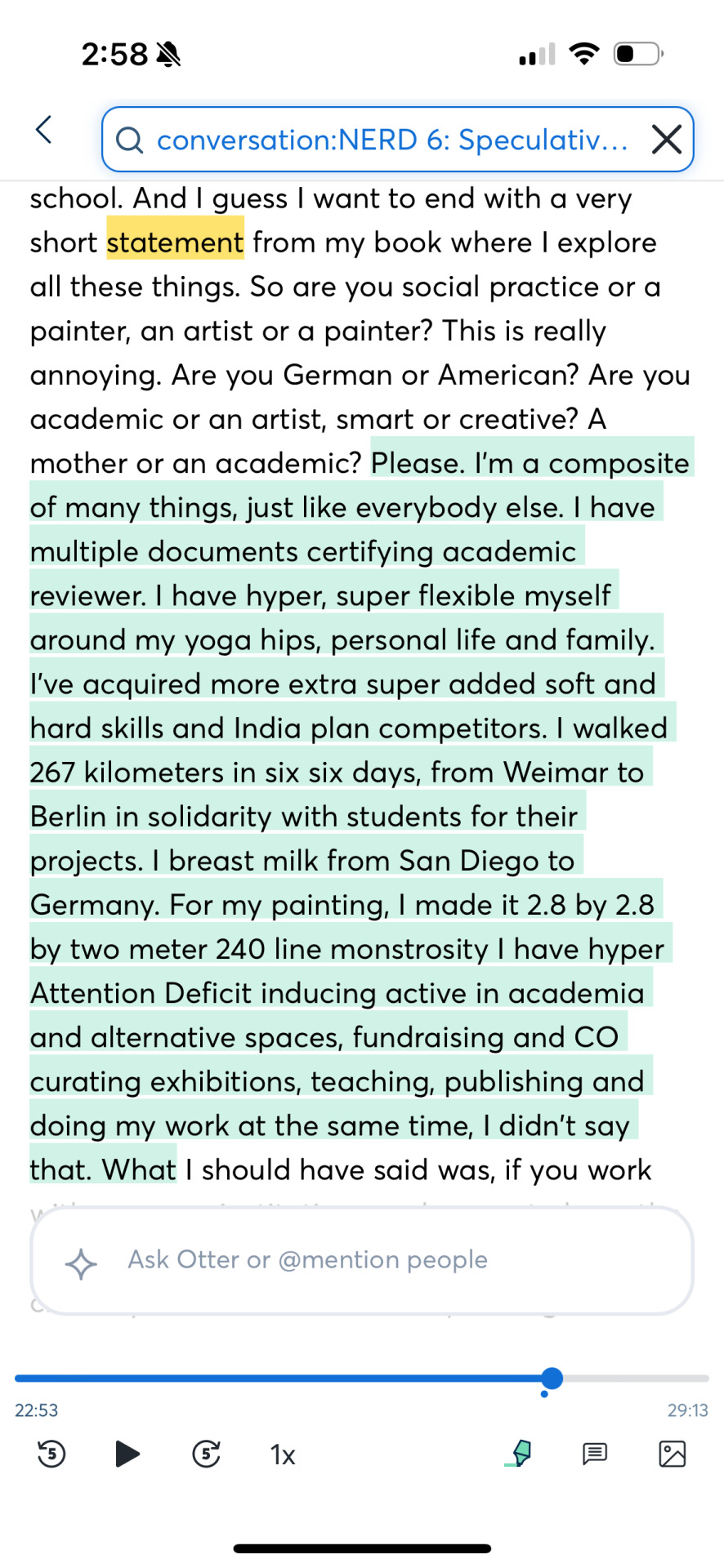
****
NERD 6 sense program
Alive Matters
A Multi-sited Approach in Biodesign: Biomaterial Diversity in the Lab and the Field Emma Sicher (HfG Offenbach am Main / Matters of Activity, HU Berlin)
2. Between Alive and Inert: Exploring Potentials of Mycelium-based Composites in Context of Bio-inclusive Architecture Marta Mastalerska-Scholz (TU Berlin)
Speculative Existence
3. Polyphonic Futures: Collectively Speculating Bio-Digital Imaginaries as a Transversal Engagement Method Across Matter, Design, Science and the Public Veronica Ranner (Nanyang Technological University, Singapore)
4. Pleasing Machines: Aproaches to Experimental Artistic Research Design Lisa Glauer (Kang Contemporary)
Spatial Encounters
5. Walking with the More-than-human in Hong Kong: En/Inaction in Design for Posthumanist Transformation Clee-Zhuo Wang (Hong Kong Polytechnic University)
6. Counter Space: Strategies for Challenging Hegemony in Institutional Spaces Ozan Güngör (Critical Media Lab / HGK Basel, Switzerland)
Textile Narratives
7. Digital Stitch Pamela Nelson (Hogeschool van Amsterdam, Netherlands)
8. Designers Repairing Fashion Valerie Lange (Akademie der bildenden Künste Wien, Austria)
Machinic Extensions
9. RoboSonic Play: Performing Auditory Dimensions of Otherness Elias Naphausen (THA), Jan Willmann (Bauhaus University Weimar) & Andreas Muxel (THA)
10. My Leib is my Lab: Post-phenomenological Investigation of the Explorative Computer-aided Design of Graphic Images Natascha Tümpel (Bauhaus University Weimar) (Cancelled)
Explorative Reflections
11. Experiments in the Art of Systems Thinking: Remediating Systems Thinking for Design Education in Product Design Ranjit Menon (Amrita University, India)
12. No Recipes for Design: Reference Resolution, and the Metaphysics of Design Objects Luz Christopher Seiberth (University Potsdam) & Robert Fehse (ARGUMENT)
****
Reference:
Jonas, W. (2024). A cybernetic model of design research towards a trans-domain of knowing. In P. Rodgers & J. Yee (Eds.), The Routledge companion to design research (Second edition. ed.). Routledge.
Rees, T. (2018). After ethnos. Duke University Press.
Hirscher, M. (2024, 2024-06-23). Human-material interactions as practice for care. DRS2024: Boston, 23–28 June, Boston.
0 notes
Text
Food ethics
Hairy crab and animal friends

Friday, reading club was sharing thoughts on Annemarie Mol's Eating in Theory
J: “Nowadays if you ask kids where are meat from, they would say from the supermarket.”
Ca: “In autumn it is the season to eat hairy crab. My mom feels bad because you have to cook them alive. You have to see them alive and put them in the wok. She felt it is cruel. But my grandmother didn’t know how to cook them, so she asked around, and there was a chef living next door, so she asked him. He told her that as a practice the chef will say something to the crabs before cooking them.”
Cl: “That’s where I see the practices in the ancient tribes makes more sense. You have to raise your own chicken even if you will eat them eventually. But you will put in more thoughts eating something you have put in so much labor raising, they are almost like your pet or your friend. That is the counter affect that the modern supply chain unable to establish.”
Cl:"The debate on plant ethics is even more interesting. 'Cos you cannot not eat plant. You have to get energy to survive and that has to be from plant."
J: “I remember from the movie Notthinghill, Hugh Grant used to date a girl who only eat fruits dropping from the tree…”
Cl: “Its like they are given by god”
Cl:"But I almost feel its impossible... if you think of the goal of human living harmonious with the other species, fully integrated in the cycles. Then there is no way that all of us living in abundance every day..." (It is both nostalgic and over-romanticized and unrealistic)
---
2. Ginger and cultivated beef

Saturday, after a sensory walk tour rehearsal in Wan Chai, we sat down in the Dim Sum shop for early lunch. And the Stir Fry Kai-lan with Ginger was delicious. We start to discuss the nuanced difference of different sub-species of ginger, which is a “tribal” knowledge in Canton.
X: “Cooking reminds me of the many small pleasures in life. This is nothing to do with how much money you make or how much achievement you have in life....I want my kids to understand the many nuanced experiences...The pleasure of knowing the slight difference between different plants and savouring their different tastes. There is shengjiang (raw ginger), huangjiang (yellow ginger), zijiang (tender ginger). They are all different. But less and less people know them. I worry less people will grow them in the future.”
C: “Nowadays, in name of efficiency, food is more and more just for energy, and flattened flavour. Thus all the problems of the pre-made food in China. For many ginger powder suffice. Who cares about what ginger it is.”
P: “It reminds me of the news that some labs start to “grow” meat. They culture protein in the lab, and invite KOLs to taste. The KOL says “they really look and taste like beef!”
C: “How can they be the same? If you think the fact that farm animals, like grapes, are also the product of their stock grass and their life. If you grow up with McDonald, yeah they are the same. But the rich will always still eat Wagyu.”
P: "Yes, but the scientist only calculate the carbon emissions and it was dramatically lower.."
C: "But with that who cares what aniaml is it and where it is from? All I care is how much energy I need and how good the taste is for me. That is the whole problem of the socio-technical approach to sustainability, which I'm in disageement. By solving one problem quantitatively and rationally more problems will be produced."
----
3. Shrimps

Friday night at home
Mom: “I’ve got shrimps from wet market.”
Wa: (very excited) “Oh, shrimps!” (Went into the kitchen and played with live shrimps for a while)
(When it’s dinner time.)
Wa: “I don’t like eating shrimps.”
Mom: “Sorry to hear that… Yes, I remember a few months ago you had a really good time playing with the shrimps, you asked to keep one of them as pet… You said you don’t want to eat shrimp anymore… But you eat crawfishes, they are the same!”
Wa: “Yes… But I’ve seen these shrimps alive. So i’m not gonna eat them.”
0 notes
Text
Systems mapping and the possibility of a bottom-up systemic design
With the conclusion of systems thinking/system mapping lectures with 3rd year Social and Service design undergraduate students, I have developed some thinking on systems mapping, systemic design and social design.

System mapping can be many things, from causal loop (rooted in systems dynamics) to stakeholder map and journey/process maps. In a broader sense, system mapping is the process and outcome of sense-making of what consists of a system (components) and how they are bind together (connections/relationships)
The prevailing systems mapping practice in systemic design somehow resembles consultancy work, particularly its participatory process of running workshops, doing interviews, engage stakeholders to reflect difference for negotiation/building concensus/co-visioning. Indebted to Checkland's interpretative methodology and rich picture approach, systemic designers highlight their ability to bring visual power to their system mapping process and artifact, thus reaching broader audience with better communicative power. This proposition for designers is shared by Birger Sevaldson and Peter Jones, the two major representatives of systemic design in Norway and Canada.
Comparatively speaking, the Oslo school of systemic design (led by Seveldson) tends to build "gigamaps" that contains information across levels and different perspectives. This gigamap, according to Sevaldson, serves as a "memory" of design research as well as enriches design space (display on the wall for example). It however requires significant amount of effort in collecting information and arranging in highly aesthetic layouts. The Canadian school of systemic design, led by Peter Jones and the practice of "synthesis maps", focuses more on the conceptual models and mechanisms of system, and borrows theory from different disciplines (e.g., economics and psychology) to build "archetypes". Peter Jones and colleagues have developed rich resources of templates and archetypes that can be used as starting points in client-designer context. However this more procedure-based process may also already confine what can be generated from dialogues and fieldworks.
Acknowledging designers' visual power, designers do have limited understanding and basic training in the broader socio-economic systems, compared to students trained in social science. For example, business students, despite their limited hands-on experience, do have a better sense how financial reporting works and why the reporting routine can generate influence in daily operation and decision making. Therefore while being attracted by the beautiful visuals of system maps by systemic designer, one may ask if it helps communication between people who may have already developed a certain language system or making an additional layer in between. A new perspective like visual thinking may help to see the ordinary with fresh eyes, but it may well better create useful interactions when the communication is between different communication systems, e.g., between public/consumer and management, or between broader stakeholders, e.g., local community, and government.
The above-mentioned systemic design (as a practice), in my view doesn't make a foundamental difference from consultancy work. However, I argue designers can also enter the system/system mapping with a completely different entry point, that is from the ground up. Entering from the "big, buzzing confusing of reality", the unspoken pattern of habitus. The abstraction of the world in the mind is highly structual and path dependent, while multiplicity of experience is infinite. Designers who do ethnographic type of fieldwork often struggle with simplifying and appropriating what they observe to pre-determined measurements and frameworks, yet I argue it is this messiness that bears the possibilities of viable new relationships. In the classroom I used work by Street Report World (IG @street_report_world) as visual research resource to illustrate how relationships can be abstracted from ground up and new relationships can be imagined. Without seeing the picture of pigeon and tramway track one would never imagine such a relationship exist. (While writing this sentence Maan Barua's Lively Cities comes in mind. I have tried to think the Hong Kong counterpart to his monkeys jumping between electric wire and "bombed" transmission station, but all I could think of is pigeon taking building structure as shelters. Human's imagination is certainly limited.) I tried to find precedents of such practice where ethnographic research is interpretated visually into more abstract terms but I couldn't find any. The only reference I can think of is the rather primitive endeavour by ethnographers to use diagrams (see Chapter 7, in Experimenting with Ethnography, edited by Ballestero & Winthereik, 2021). Designers have better skillsets to illustrate the emerging relationships that are already part of messy reality, but to make it significant and relevant to any societal level change, they need more training or external help in projecting it to the broader system. The other way to think of it is to look at the pattern that is shared across scale (thinking of fractal). While the existing structure may seem to be unshakable, the ground level view is often a mix of "logics" (Mol, 2008). To accurately map the competing or co-existent logics at micro-level prepares the alternative narrative for grander transformation. Isn't Foucault's genealogy of prison or sex following the same logic?
I am so grateful for the trust Social Design faculty puts on me for the opportunity to deliver this couple of lectures. The process of preparing for these lectures greatly refreshed my memory and enhanced my understanding. In a short conversation with Kam Fai after the lecture, we shared our feeling that Social Design as being taught and practiced in PolyU School of Design is quite different from social design in other places (e.g., in China or Italy/DESIS). One takeaway I had from diving into systemic design is that academia theorization is largely dependent on a good quantity of project being done, both in university-industry collaboration (sort of a client-designer situation) and in teaching, so that the topic could evolve and mature in real project situations. In Hong Kong, social design projects are funded in a different way (compared to, for example, the government-downgraded projects due to neoliberal austerity , as described in Julier & Kimbell (2019), or the government sponsored projects as for service design in nordic countries). It is my guess that the viability of social design / NGOs are related to the churches and its long tradition supporting the Chinese community since colonial time, as well as the government funding structure for supporting people living at / below poverty line (there is no 居委会 as the community governing body). With this developing understanding of the social context and the practice, can our Social Design become a school of thought itself, with its own methodologies and theory? To take it one step further, how can we imagine social design going beyond the Micro and think of its connection to societal change? (At the end of the day, I still cannot escape my economist grand "gaze"!)

7. The credit systemic design rightly gave to the soft systems approach of Checkland (Sevaldson, 2021) leads to interesting question of how systemic design, and design in general approaches change. Interestingly, I find a high degree of similarity of what systems thinking was trying to achieve in business management, through teaching in business schools and consultancy/"action-research" works, quite similar to many methods adopted by design. In 2019, Design Issues reposted a reflection by Fred Collopy titled "Why the Failure of Systems Thinking Should Inform the Future of Design Thinking", in which reads the following:
"Systems thinking, as written about and practiced by Russell Ackoff, C. West Churchman, Peter Checkland and others, contained within it many of the impulses that motivate the application of design ideas to strategy, organization, society, and management. Ideas such as engaging a broad set of stakeholders, moving beyond simple metrics and calculations, considering idealized options and using scenarios to explore them, shifting boundaries to reframe problems, iteration, the liberal use of diagrams and rich pictures, and tirelessly searching for a better set of alternatives were all there." (p. 98)
One with certain sensitivity to design research could easily identify the traces of participatory design / co-creation, foresight & futures, speculative design, frame innovation, etc, etc. While excited with the new ways of representation, as a discipline we should also ask ourselves: have we learnt from the fading of systems thinking in business? In which foundamental, epistemological or methodological ways design could breakthrough from what systems thinking cannot achieve? What design really has to offer, and what are those things?
In the same article, the author listed a few difficulties faced by systems thinking at the time:
"I have heard their objections to the arbitrariness of any particular system’s boundaries, to the impossibility of balancing the incommensurable objectives of a system’s many stakeholders, and to the difficulty in identifying clear measures of a system’s performance." (p. 98)
Similarly, critical systems thinker Michael Jackson in his critical review of the field after decades of development points out:
"SSM (Soft Systems Methodology), to radical change critics, merely facilitates a social process in which the essential elements of the status quo are reproduced – perhaps on a firmer footing since differences of opinion will have been temporarily smoothed over. In doing so, it supports the interests of the dominant group or groups in the social system. Checkland (1981, p. 283) does seem to take the point that the discussion/debate stage of SSM can be crucially inhibited by society’s structure but concludes rather weakly from this that “it is the nature of society that this will be so.” This says nothing about the degree of constraint on discussion imposed by particular social arrangements or about the possibility of changing the arrangements in order to facilitate communicative competence. The social environment in which the methodology has to operate nullifies, therefore, its attempts to bring about changes based on a genuine accommodation between different opinions and interests. The methodology is culpable in that it is prepared to accept for implementation changes emerging from false accommodations produced by distorted communication. " (p. 436)
This rather gloomy view resonates perfectly with Julier & Kimbell's reflection on social design (also in 2019) that "as currently configured", that is, without normative structure and integrated direction, and work mostly on virtual imagination of change, "social design practice is destined not to tackle the causes and consequences of inequalities, even while being enrolled in social change and policy development." Though Julier and Kimbell were writing in the context of social design conducted in client-designer situations or government agencies, the question does point to a problem that is applicable for design's growing ambition in addressing wider socio-technical-economic issues. Changing one language to another (visual) language is not going to change the power dynamic, nor make action easier, let along making consequences more preditable and manageable. The answer to the question of "how design solve the problem of virtualism, elitism and power dynamics" points to a fundamentally different methodology and even epistemology. That is where I believe the future of design research lies in.
Reference:
Chapter 7, Drawing as Analysis: Thinking in Images, Writing in Words, Rachel Douglas-Jones, in Experimenting with Ethnography, edited by Ballestero, A. and B. R. Winthereik, 2021. Duke University Press.
Barua, M. (2023). Lively cities : reconfiguring urban ecology. Minneapolis, MN, University of Minnesota Press.
Mol, A. (2008). The logic of care : health and the problem of patient choice. Abingdon ;, Routledge.
Julier, G. and L. Kimbell (2019). "Keeping the System Going: Social Design and the Reproduction of Inequalities in Neoliberal Times." Design Issues 35(4): 12-22.
Picture from Ding Ding 叮叮, Street Report No. 3, Cathy Hang, Temporary Press (it was great to have talked to Faz Bin Zohri, one of the initiators of the series in this year's Tai Kwun Booked bookfair!)
Sevaldson, B. (2021). Designing complexity : the methodology and practice of systems oriented design. Champaign, IL, Common Ground Research Networks.
Collopy, F. (2019). "Why the Failure of Systems Thinking Should Inform the Future of Design Thinking (06.07.09)." Design Issues 35(2): 97-100.
1 note
·
View note
Text
Scattered thoughts from (re)readings of systems thinking
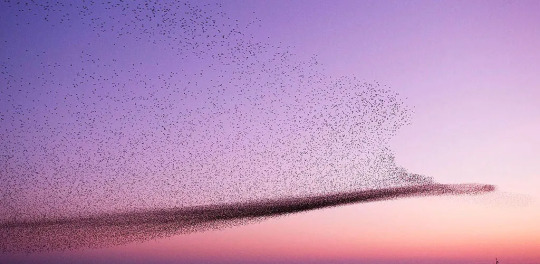
On Maturana, experience and perception, or perception based on experience
It's funny that I cannot explain Maturana quite well even if it profoundly changed my thinking.
Maturana's biological achievement includes the breakthrough on understanding frog's vision, particularly how what it sees is not what there is out there, e.g., a fly, but is the "information" necessary for its action, e.g., how a fly moves so the frog could catch it. (In some mysterious ways it resembles J J Gibson's theory of affordance, so the object, or the environment is not a thing that can be objectively represented, but is always limited by, or seen through an observer's capacity to translate it to potential action.)
Of course Maturana goes further with understanding primarily about human minds and cognition:
"Therefore, underlying everything we shall say is this constant awareness that the phenomenon of knowing cannot be taken as though therre were "facts" or objects out there that we grasp and store in our head. The experience of anything out there is validated in a special way by the human structure, which makes possible "the thing" that arises in the description." (p. 25-26, Maturana & Varela, 1998)
Is it a scientific/biological deduction from how autopoiesis is understood in terms of life form? Or is it already metaphorical to apply on cognition, minds and knowledge? Irrespective of the answer, the implications on organization of system and on knowledge and learning are huge. Making it relevant to my interest on human-nature connection, the connection itself is not about expanding the scope or boundary of a system, from human to more-than-human, but meaning to be open to the "perturbations" of beyond human society, gradually adjust its own structure, from where it is today, "fitting" (like a fitting at a tailors) into the new coupling.
2. Self-organization and energy flow
There are different ways to understand self-organization. Prigogine use the physics of dippisative structure, while some others (to be identified source) explain it as the stages from 1. deviation of equilibrium due to positive feedback loop, 2. self-organization, 3. phase transition, 4. new equilibrium. The second explanation of self-organization as a stage in phase transition is similar to the depiction of Complex Adaptive Systems/Cycles, (though CAS always gives me a bit of both hierarchical and teleogical taste).
Now think in the language of self-organization, there are a few things to be considered
a) self-organization, as in the example of murmuration or in its computer simulated examples, is about simple rules applied at the local, micro level. Where are these rules from? Do they originate from bottom, or cascaded from top (I wouldn't say so!), or are they themselves result of evolution?
There is also the question of scale - can different strategies, or micro rules, exist in different pockets of locality?
Transformation scholar Karen O'Brien (O'Brien, 2013; O'Brien & Hochachka, 2024) attributes the spread of new values to its universal appeal, which is a very strange set up for a bottom-up view of transformation. I'd rather again goes to the practice theory, ecofeminist and Mol, and find those shared "logics" of hands-on front line workers in touch of life.
One key feature of self-organization, according to the entropic explanation, is it has to be fed by a constant flow of energy, the energy from order to chaos, It is salvaging on those energy that self-organization gains hope and find new ways to organize. Thinking with the personal experience, self-organization starts with flow of energy, flow of experiments, flow of movement. Don't settle. Wayfaring doens't mean proceeding toward a goal, but continuous adjust according to the minute situation. The new direction emerge from this constant movement, trying, experimenting. What does it mean for design? This is an angle I could explore further for NERD 6 in November.
b) the question of time - Prigogine seems to have discussed it more extendedly in Order out of Chaos (Prigogine & Stengers, 1984) will have to check it out
c) how do these local rules spread? What are the distinctions between those small scale experiments that gets amplified, and those don't?
If we think self-organization as the "positive" scenario of bifurcation in non-linear causality, what is the small difference that makes all the difference? Is it the "aha" moment of an individual? Is it coincidence of intellectual curiosity and certain kinds of power? Is it random? What Manzini's social innovation tries to do is to amplify the weak signals, experimentation of new modalities. That is where the idea of self-organization is most relevant to social design. What are the lessons to draw from physics/biology?
(might continue, we'll see)
0 notes
Text
More than “more-than-human centered design”

Earlier this year when presenting in EASA 2024 with anthropologists and peer design researchers, I (after my presentation done and a drink in the kitchen at 11pm Hong Kong time) responded rather strongly to the idea of more-than-human design as “more-than-human centered” design. Example is to consider how wildboar moves around and create tunnel in urban spaces. At that time I cannot quite articulate where that sentiment is from. I still cannot today, but finds two reference helpful in explaining my opinion, that more-than-human design, or more accurately posthumanist design, is not just design for more-than-human.
One reference is Alex Wilkie’s co-authored paper on speculative design brief. Knowing his strong theoretical foothold in process theory gave me the confidence to read the paper in detail and multiple times. What I take away so far is that the design brief meant by Wilkie and authors is not only concerned with the outcome of design but also the process of design. This is key for understanding their concept of “design event”. This is under the premise that designers don’t start the design process knowing exactly what they want to design. Rather than “allowing drift” which is the idea of “design drift”, Wilkie takes a more radical position seeing this formulation of design brief as part of design process. This the design brief includes the intention of design and instructs processes for designers to map the network with existing and absent (more-than-human) actors. Theoretical conceptualization proceeds the forming of brief for articulation through design. In an other word, theory not only serves as providing the mechanism of design (as designers always go to psychology for ways to do something), but is the fundamental reason and drive for design articulation.
The next reference comes from a quick read of Annemarie Mol’s latest book Eating in Theory. I have yet to wade through the whole book. But based on the first chapter where Mol introduced the intention and structure of the book, it surprisingly shed some light on my research. In this new book the topic Mol explored is eating - an mundane, too ordinary experience that everyone cannot do without for every 12 hours they are alive on earth. Mol sets off to challenge the separation between survival and living, between labor and actualization which is very much in line with my idea of practice theory. What makes my eyes wide open with excitement is how she does that by reframing the not-worth-mentioning experience of eating. There is nothing new actively being done or designed, but this reframing is enlightening for us to take another look at all the everyday experience we have and see them in new, philosophical lights. In a nuanced way this reframing to me is connected to what Foucault and Braidotti always does, and according to (the amusingly mysterious) Barad, another way of spacetimemattering. If we call any intentional doing with a purpose as design, then Mol’s approach is also design with changed theoretical lens (from Hannah Arendt / Aristotelian) division of body and mind (labor, work and politics) to something else. A missing step if there is to call it design is to prove that such reframing gets to people’s mind, and make concrete, material change in their doing, even if it is just to feel how their throat is in touch with the other - plants and animals that we call food. I was definitely inspired by a talk by design researcher /to-be anthropologist Duan Zhipeng last week that what interests him more is not doing any form of intervention directly - like me he is no believer that the top-down approach would work, but to better “describe”. In this sense, the cosmetic work of design - I have graphic design in mind - can also be critical in forming new ways of thinking, and a lot of the top-down structures that we have relied so much in the past won’t be too helpful in achieving this vision of graphic design.
So design - I’ll use the term posthumanist design for now, is not about more-than-human centered. It is the reshuffling the conceptual construction of the world for everyone, from designers (in Wilkie’s case of attuning to MTH as part of design brief) to people who eats (which is everyone who is alive). If this can be done in the most mundane experience of eating, it can certainly be done for other groups - certain professions, certain geographies, certain practices. Finding the existing contact with MTH or stage such contact, reframe the experience as transformative learning opportunities (Mezirow) to prepare for the conditions of social change (Manzini).
ps. Some of the discussion on the relationship between theory and empirical in introductory chapter also reminds me of the many methodological books by Matz Alvesson where the empirical is not only for applying theory but for generating novel theories.
I hope I will get more thinking disturbed in reading Mol - I’m in discussion with peer PhD student to do a book club on Mol’s two books. I also am curious how other design students think of them.
References:
Wilkie, A. and M. Michael (2023). "The aesthetics of more-than-human design: speculative energy briefs for the Chthulucene." Human–Computer Interaction: 1-13.
Mol, A. (2021). "Eating in Theory."
Alvesson, M. and D. Kärreman (2011). Qualitative research and theory development : mystery as method. London, Sage.
Alvesson, M. and K. Sköldberg (2009). Reflexive methodology : new vistas for qualitative research. London ;, SAGE.
0 notes
Text
On a sunny summer day I decided to dive into the puzzles of Barad's spacetimemattering. Here are the two articles:
Barad, K. (2013). Ma(r)king Time: Material Entanglements and Re-memberings: Cutting Together-Apart. How Matter Matters: Objects, Artifacts, and Materiality in Organization Studies. P. R. Carlile, D. Nicolini, A. Langley and H. Tsoukas, Oxford University Press: 16–31.
Barad, K. (2018). Troubling Time/s and Ecologies of Nothingness: Re-turning, Re-membering, and Facing the Incalculable, Fordham University Press: 206.
It is not too difficult to understand matter - materialization as sediment of time as the "growth" of sedimental rocks:
"Memory - the pattern of sedimented enfoldings of iterative intra-activity-is written into the fabric of the world. The wolrd "holds" the memory of all traces; or rather, the world is its memory (its enfolded materialization)." (Barad, 2013, p.29)
"Matter doesn't move in time. Matter doesn't evolve in time. Matter does time. Matter materializes and enfolds different temporalities." (Barad, 2013, p. 17)
However the "iterative" needs a bit explanation. How can memory and matter be iteratively entangled?
The quantum-eraser experiment is crucial to Barad's theorization of temporality. In a time-stamp manner the experiment can be understood (by a non-physicist) as such:
t0: the photon sets off t1: the photon passes the slit(s) with the which-slit detector, the slit of passing gets recorded t2: the eraser erases the information detected by which-slit detector tn: a different pattern captured by the graph, which indicates a different ontological existence (wave/particle) on the photo when set off. In her explanation of the different pattern in t2, the erasure (t2) travels back to the "past" (t0) and changed the ontological being of the photon and consequently its behavior when passing slit (t2).
There is a sentiment that the past is never finished and done, taking a fixed form, but both continues into the future in its materialisation (consequence) and (more importantly) waiting for future reconfiguring that alters the present. This alternation, according to Barad, is not epistemological (our understanding of the present) but ontological (what present is):
"Heisenberg understands measurements as disturbances that place a limit on knowability - that is, measurements entail epistemic uncertainties. Whereas, for Bohr, measurement is about the conditions for possibility of semantic and ontic determination - that is, ontological indeterminacy." (Barad, 2013, p. 26, highlight added)
Barad uses Derrida's term "hauntology" for the materialization.
There is also hope, future possibilities opened by the reconfiguring of the entangled past:
"Hayashi's narrator bodily traces these entanglements of colonialist histories, violent erasures, and avoid-ances as an integral part of a sacred practice of re-membering - which is not a going back to what was, but rather a material reconfiguring of spacetimemattering in ways that attempt to do justice to account for the devastation wrought and to produce openings, new possible histories, reconfigurings of spacetimemattering through which time-beings might find a way to endure." (Barad, 2013, p. 230)
The 2018 article becomes obscure when it goes into the discussion of void, vacuum (fluctuations), tension of the void and virtual articles. At times it seems to have been inspired by Bergson/Deleuze's virtual and actual:
"The vacuum is far from empty; rather, it is flush with yearning, with innumerable possibilities/imagining of what was, could be, might yet have been, all coexisting. Don't for a minute think that there are no material effects of yearning and imagining. Virtual particles are experimenting with the im/possibilities of non/being, but that doesn't mean they aren't real; on the contrary." (Barad, 2018, p. 232)
She even offered a very swift speculative design of a scentific article, making virtual particles the actual essence of an atom.
The Bergsonian influence becomes more prominent in the discussion of electron as multiplicity - aggregation of all histories of intra-action with the others:
"Hence, according to QFT, even the smallest bits of matter are an enormous multitude! Each "individual" is made up of all possible histories of virtual intra-actions with all others; or rather, according to QFT, there is no such thing as a discrete individual with its own roster of properties. In fact, the "other" - the constitutively excluded - is always already within: the very notion of the "self is a troubling of the interior / exterior distinction.... all "selves" are not themselves but rather the iterative intra-activity of all matter of time-beings."
Again, (the entangling of) time wins over the "vulgar" space.
After some winding narratives tracing the travel hopping, Barad comes back to the question of self, and what this re-membering - visiting and reconfiguring the past - means:
"The pilgrimage of Hayashi's unnamed protagonist is a work of mourning, a concerted ongoing labor, never finished or complete; where mourning is not about making memories, but rather about ontologically reconfiguring a past that never was on behalf of possibilities for a better future, not as performed by a willful liberal humanist subject, but in the tracings of entanglements of multiple time-beings through which the unnamed protagonist is herself constituted."
Self is not pre-fixed, but constitutued by assembling a different narrative, tracing of entanglements of the past. Self is not history, but our act of returning and open to countless future returnings.
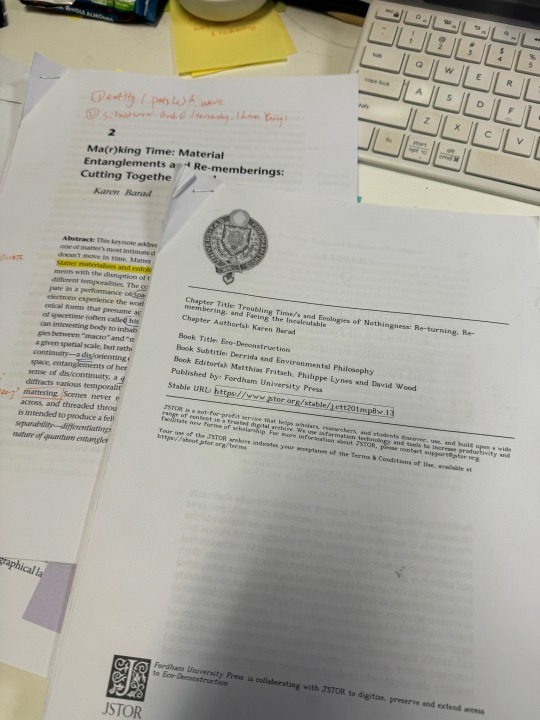
1 note
·
View note
Text
Guitar, mushroom and apples
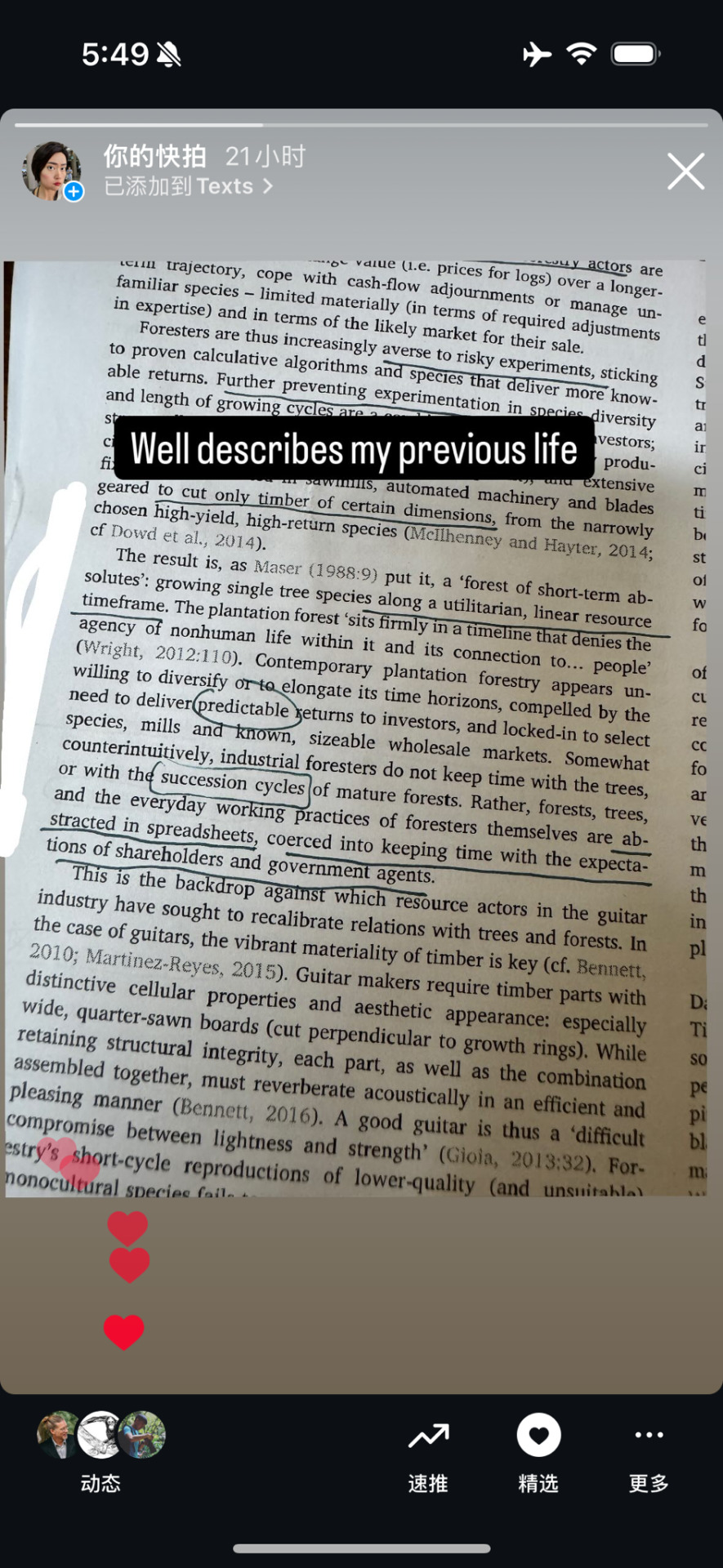
Among the many signals I sent to the cosmos, this one was liked by my friend who also had experience working in corporate. “So that resonates!” And it leads to a few more thoughts.
This paper I screen capped and posted on instagram stories (Gibson & Warren, 2020) was about temporalities of forest. Interestingly the authors situate this paper in the upstream tracing of the value chain of guitar-making which is the supply of mature wood. A small group of people who dedicated themselves in planting for the future - sowing saplings of trees which have long growth cycles thus don’t fit the fast-harvesting, industrial monoculture plantation, and take care of them till end of their lives. These people are both loggers and m keen forest lovers at the same time - there are indeed more conflicts and ethical dilemmas at practical level! Between necessity of logging and love of trees planting for future was taken as a resolution.
One among the many countless thoughts I had about my PhD topic is (at least partly) about how to incorporate the more-than-human into the everyday grounded activities of organizations. I had a lot of thoughts and doubt that how can this incorporation actually be done by many companies who already happens “only in the office and in the meeting room”. That leads me to think of where the more-than-human actually already participating in the economy or company activity - they must be somewhere as our world doesn’t exist in vacuum. One quick and direct answer is the raw material that many industries work with. In the case of to the guitar industry in this paper, indeed “nature” still exists and at the very source of value chain when people cutting trees down. For these people doing the actual cutting, as we can imagine how they live at the border of forests, going in when it’s humid and misty, enjoy cold stream to wash off sweat and dust, and go home in golden sunshine, affective relationships with the forest are developed. This affective relationship leads to balancing act of planting over an expanded temporal horizon. This complicated but reciprocal relationship has been well captured by many ecofeminist writers including Ariel Salleh, and is a key connection that I see between ecofeminism and practice theory.
But this affect can hardly be passed down to other parts of the value chain. Captured in the above screenshot is the works, or practices that as a fact erase this affective relationship and eliminates its traces. People doing it are not evil… people like me who has grown up being educated about the abstractions of the world didn’t even know how the tree world actually exists (apart of being aesthetic and academic objects).
This work of elimination done through “sumif()”s and pivot tables in excel as a key step of disconnecting us, the broader human society from the living world of more-than-human brings new light to another work that also works on supply chain - Anna Tsing’s mushroom! My previous wonder about the book was - funny enough and against my expectation - positive for the capitalism! I see how different patches of cultures and communities - from foragers in forests to gifting managers in Japan - are connected because of this chain of Matsutake. Translation, according to Tsing, works as adhesives, counters the friction on the border, connects these people and makes it work. But one thing that Tsing doesn’t articulate maybe because of its stronger opinion of criticism, is how these translation works erase and eliminate the liveliness of the more-than-human being. Mushrooms are shipped but not the excitement, the moment of ecstasy hitting by its trace, the disappointment of false alarm, the rewarding feeling accompanied by tiredness. That translation is part of the process of objectification and commodification. That is the work I personally participated in the past. After all, translation is never lossless.
With the 15 minutes I have left before morning chaos kicks in I will not be able to delve deeply in how globalization as a phenomenon expertly described by Tsing is deeply rooted in economic 101 that is division of labor and the fundamental mechanism of trading. With this logic we have indeed done really well and pushed it to the extreme that the globe can no longer hold us. But from above analysis it seems globalization, or the very starting idea of “get 1 apple and 1 orange by trade is better than growing my own apple” without other balancing mechanisms will lead to our situation - supermarket shelves of apples and oranges and pears and watermelon and kiwi and this and that berries … all at the same time no matter which season, placeless and rootless. They used to be on trees, heavy, low-hanging, and shared by birds. In seeing them as lives and enjoying abundance, can we really have it all?


Apple tree in Campbell, Tasmania
1 note
·
View note
Text
Reflecting on development - a personal note
Memories come back to me from time to time for different reasons. When discussing the elusive topics of the more-than-human and posthumanism, at the same time I think of my distant childhood days, when at the age of twelve I lived in my middle school for about a year. It was not a proper boarding school, just an old classroom with 14 bunk bed / 28 roommates in it. All my belonging was in one big wooden box (like one of those boxes in old days woman get married with filled with marriage deposit by her parents. I wonder where that box is now?). There was no toilet in the building, meaning in the winter days of -5C you have to walk outside of the building to wee. Nor is there water supply. We each had a bucket which we fill with water and carry upstairs each day for brushing teeth and washing face. Of course no hot bath.
It sounds not only old, but like last century (indeed it is last century). But that was the humble upbringing of mine. My parents were distant from the start, maybe because I'm diciplined and too scared / anxious already.
Amid the frustration of finding I'm still not as confident, as outspoken, as articulative as I wish, as what you see young people from top universities naturally do today, I have to remind myself again and again the path I have walked to simply get here.
But what is this experience of any value other than self-content and even indulgence?
This summer I had the chance traveling to Australia and States. Somehow the kitchen and toilet got my attention. The western kitchen demonstrated a standard (or at least expected by airbnb users) - full sets of dishes (one big and one small) and cereal bowls, glasses, mugs, wine glasses. Behind these are their long maintained lifestyles. The form of the kitchen is compatible to (and co-evolved with) the sets of utensils over the period of 1-2 centuries. Even deeper beneath the organization (and diligence put in by housewives) is the aesthetics of order and cleaness. Walking into this kitchen from a chaotic, hot and splashing (dangerous!) Chinese kitchen, one can easily come back feeling ashamed and not "modern". (Let alone the fact that Chinese kitchen has exploded with kitchen appliances catering every particular needs in life thanks to consumerism and its big population base.) I myself has been one of them, coming back and trying to imitate one trick or two for a long time.
But this time I start to ask two things: what is the logic of a Chinese kitchen if it is not purely order and cleaness? And what are the the conflicting forces behind the kitchen that makes it "feeling messy and outdated"?
Memory comes again... not in a linear thread of thinking, but I thought of in my Western China hometown, noodle and potato was the stationary food. The only vegetable supply at the time was Chinese cabbage, and mom works diligently to make tomato sauce of our own each year - not for the sake of special flavour, but for keeping some tomato for the winter that goes to almost every dish. Local food is the manifestation of local produce and local economy. We had so much carb and so little meat and vege, and fish was a once in a year event. That's why hot oil splashed chili is a stationary on the dining table and can be added in every dish. We simply needed some flavours to go with all the carb.
And I remember how, in my teenage years, I bought a Dove chocolate bar, probably a 50 gram one, with 5 RMB (less than a US$). I ate it slowly, wrap it up carefully after each bite, and finished it over a week time.
Rather than thinking of this limited variety of food as a "lack", I'd say I didn't feel that way at all at that time. Lack is only when comparing to another and believing the other is better, being it a spatial comparison (seeing other people in other places) or temporal one (looking back from today). And really a spatial comparison when done in a particular and embodied way doesn't really lead to a feeling of lack. I remember when I was in primary our family visited my uncle's family in Shanghai. Their food was terrible in my then opinion. My taste is coupled with the food I grow up with.
So what does all this lead us to? Development (in postcolonial sense), or the project of modernization, is the backdrop of my upbringing. In a timespan of only 30 years I (and many people around me) in China marched from our humble food and kitchen, weekly hot shower, and 28-people dormitary to a modern life. We opened our kitchen, tore the wall, expanded it to host all the things that were shiny and new that we brought from our trips, that we invented in the same learnt spirit (or we think - I think of the Piet Mondrian style glasses that were in every Chinese family in early 90's, even no one knows his name at all. I think of the italian country style crochet sofa panel that never existed with a Italian grandma).


Is there a thing of our own? Did it exist? Can it be retrieved? Or maybe, among the rich and messy details of reality, among the memories like how I learnt to make noodle from scratch when I was 8 or so, such a "tradition" only exists when articulated and abstracted?
If the whole development project was a messy example of "learning another culture, or way of living", it seems to be an explosive one that bombed the original texture of life into pieces. Were we to do it differently, not in a way that the "advanced" trying to teach the "primitive" and the "primitive" trying to absorb and catch up, but as two strangers getting closer and conversing, both trying to understanding why are the difference there in the first place, to not only take the form of Monderian or crochet, but the logic of order and cleaness and the appreciation of Sicilian sun and time, could the process and result be different?
And what does that teach us to become "posthuman"?
0 notes
Text
When we talk about change...
(An english version can be found after the Chinese... Notion helped me with translation and I corrected a few places too.)

在昨天Dorst的keynote speech裡,Dorst用哥白尼提出日心說(as in Copernican Turn)來舉例變革之難。哥白尼的理論得以被大眾接受,卻是得益於“拜日教”的Kepler出於信仰的研究。在評論這種“三觀不合但的確有用”的幫忙時,Dorst說了下面這句整個speech裡面讓我印象最深的一段話。
“If it works, it works. Doesn’t matter why people actually make the jump, as long as they make the jump. The good design always gets what are people actually thinking now, how can you understand that and how can you help them make that jump to think about these things.”
這種實用性體現在Dorst演講和點評的方方面面。比如他提到荷蘭項目中非常複雜的nature vs. farming的尖銳矛盾,以及在空間、社會、政治上多層次的複雜性。這樣的問題如何給出“解決方案”?Prof Dorst給出的答案是在矛盾各方的價值層面尋找共同點,最後落在一個詞“Vitality”上,然後圍繞這個詞建立”學習循環“ learning cycle, 看起來更像是一個institutionalised action research mechanism,把professional world和society通過doing and reflection連接起來。這能解決政府提出的nature vs. farming的問題嗎?未必。但這個過程同時也會提供更多對這個問題的理解、讓決策者自主發現問題的不切實際、或者提供更多的frame問題的方式。
從某個角度來說,Dorst還沒出版的新書的題目Creating space for deep change,跟我的human nature encounter是有一點相似的。有contact zone,才有機會暴露系統之間不同的邏輯和假設。這些假設不僅是看待和理解(make sense)世界不同的方式,他們也在這個世界以某種方式共存。就好像農業耕作以及架構其上的農民的時間分配、村莊的娛樂活動與祭祀、供應鏈的活躍程度及匹配,都會與這個時間線所匹配(coupling),不同價值的理解並不是要尋求consensus甚至homogentization,而是在boundary的negotiation和translation(這一點又想起了Anna Tsing在mushroom和friction兩本書裡精彩的詮釋)。
對這個講座的欣賞,很多可能來自於很少會有人這麼深入理解變革的難度,各個機構和系統從政府公司到自然界不同的時間維度,人行為和思維模式改變的不受控性和非理性。從某個角度說,“解決問題”本身常常可能是一種不切實際的期望。紙面上的解決方式,“因為”-“所以”不難做到。但現實生活常常在看不到的地方要麼打臉,要麼以其他看不到的方式展現,導致更大的不公。
如果用兩個詞總結Dorst的中心思想,我會說是halfway(借用Barad的Meeting the universe halfway)和condition.
Halfway代表的是不同角度之間的common ground,好像boundary object這個概念一樣,能夠讓不同的人哪怕以不同的詮釋都能夠找到感興趣的角度並展開討論。在farming的案例裡,vitality這個詞在雙方之間構建了基本的信任。能夠找到這個halfway point並把它用“誘人的”方式呈現出來,是需要對雙方深入的理解和一點天份的。這並不只是創造一個buzz word,而是能夠獲得雙方信任、開啟對話的基礎。在反思我自己的研究的時候,覺得雖然做了很多思考,但在這個“向下”或者向外延伸的動作還是做的遠遠不夠。if it works, it works。任何好的intention都需要解決現實的問題和關注才能被接受,在學術界也是一樣的道理。
而condition,更像是一種允許兩種系統展開長期structural coupling的架構,可能是某種流程和循環(比如前面講到的learning cycle,或者某種committee;以及Dorst對於設計學院“Lab-Academy-Podium-Temple“的設想),物理的空間,多元化、藝術化的形式(比如他提到了一個項目利用theatre作為雙方溝通的方式),也可能是跨越系統的個體(比如在nature vs farming的項目中,他們挖掘了幾個從非務農進入農業的個體案例;在演講裡也用到了Amar Bose貫通學術和實踐/商業的案例)。
但最後我還是有幾個待解決的疑問,有待繼續思考和探索
關於theory和practice的關係,決定了學院的基本定位。(在這裏深深的感受到古典哲學底子太差)如果考慮可能的幾個選項, 選項A:transcendental,理論才是世界的實質 (abstract but true) (哲學家) 選項B:representational,理論是世界的抽象模型幫助我們解釋和理解(科學家) 選項C:理論和實踐是平等的對話夥伴,intellectual和practical/material各司其職,互相交流。現實為理論添磚加瓦甚至更迭朝代(Thomas Kuhn),而理論為現實提供想像和可能性。 提出reflexive methodology的mat alvesson一定屬於C,但更偏重於前一半即現實對理論的challenge與創新貢獻。而Dorst的想法似乎更偏向後者,即理論為現實提供想像和可能性,這些可能性的實驗會引導現實提出新的問題。
當我們講到theory的時候,我們到底在說什麼theory?是科學理論(基於empiricism,但也有對世界的物化及objectivity等各種假設),還是humanities的理論,他們所基於的假設又是什麼?這一點似乎在討論相關問題時引起相當大的誤會。
我自己研究方向,在好幾個Dorst提到的framework中都可以找到自己的位置。比如
在他提出的Academic discussion <→ model <→ practice中,我自己應該也是在從academic discussion發現想法,構建model,供practitioner用新的方式去實踐(這個實踐者是誰在我的情況下也需要仔細考慮,是entrepreneur, CEO還是designer)
在deframe-framing experiment - strategic intervention/the studio的流程中,可以看做我是在deframe and reframe sustainability,然後通過experiment的方式提議新的intervention。如果從這個角度往下想,下一步的intervention不能只停留在walk,而要把movement、process的概念放入其他設計中,比如spatial design,sound design,interaction design,graphic design,或者甚至可以重新想像sustainability的項目,以不同的視角會怎樣?這個方面需要再看一些more than human design的具體內容。
講座後的Critic幫助我理出了在現在這個階段我對研究最簡短的總結,也就是multiplicity of nature, and the non-linear consequences of this understanding in living and organizing. Professor McWhinnie所謂的clarity。但每次達到這樣的clarity又會有一種自我懷疑——這是不是太簡單了?以及在這個簡短介紹中,我關於practice在change project中的重要性似乎又被淡化甚至排除了。。。
During yesterday's keynote speech by Dorst, he used the example of Copernicus proposing the heliocentric theory to illustrate the difficulty of change. The acceptance of Copernicus' theory by the public was thanks to Kepler's research out of faith in "Sun Worship". When commenting on this kind of "disagreeable but indeed useful" help, Dorst said the following sentence in his speech that impressed me the most.
"If it works, it works. Doesn’t matter why people actually make the jump, as long as they make the jump. Good design always gets what people are actually thinking now, how can you understand that and how can you help them make that jump to think about these things.”
This practicality is reflected in every aspect of Dorst's speech and comments. For example, he mentioned the very complex “nature vs. farming” issue in the Dutch project, as well as the multi-layered complexity in physical space, society, and politics. How to give a "solution" to such a problem? Prof Dorst's answer is to find common ground in the values of the conflicting parties, finally falling on the word "Vitality", and then building a "learning cycle" around this word, which looks more like an institutionalised action research mechanism, connecting the professional world and society through doing and reflection. Can this solve the nature vs. farming problem proposed by the government? Not necessarily. But this process will also provide more details and nuanced understanding of this problem, allowing decision-makers to discover on their own the impracticality of the problem, or provide more ways to frame the problem.
From a certain perspective, the title of Dorst's unpublished new book, Creating Space for Deep Change, is somewhat similar to my human nature encounter. With contact zones, there is a chance to expose different logics and assumptions between systems. These assumptions are not only different ways of viewing and understanding (making sense) the world that abstractly and intellectually exist, they also co-exist - sharing the same time and space - in the world in some way. Just like seasons in nature corresponds to the time allocation of farmers, village recreational activities and rituals, as well as seasonality of supply chains, thinks in different worlds can adjust to match in their rhythms (coupling). The goal is not to seek consensus or even homogenization, but to facilitate in the boundary zone negotiation and adjustment, a work of translation (which reminds me of Anna Tsing's brilliant interpretation in the two books, mushroom and friction).
The appreciation for this lecture may come from the fact that few people understand the difficulty of change so deeply, the different time dimensions of various institutions and systems from government companies to nature, and the uncontrollability and irrationality of changes in human behavior and thinking patterns. From a certain perspective, "solving the problem" itself is often an unrealistic expectation. The solution on paper, from "facts" (as represented and reductive) to "therefore" (the implications and actions) is easy to achieve. But real life often slaps you in the face , backlases in unseen places, leading to greater injustice.
If I were to summarize Dorst's central idea in two words, I would say they are halfway (borrowing Barad's Meeting the universe halfway) and condition.
Halfway represents the common ground between different perspectives, like the concept of boundary object, which allows different people to find interesting perspectives and start discussions even with different interpretations. In the farming case, the word vitality builds basic trust between the two parties. Finding this halfway point, an intersection, requires carefully exploring the complexity of the problem, each party's standpoint and their multiplicity of each party (farmers are not only farmers, they are sons and daughters, fathers, hobbyists, etc...) and presenting it in an "enticing" way requires a deep understanding of both sides and a bit of genius. This is not just about creating a buzz word, but about gaining the trust of both sides and opening up the basis for dialogue. In reflecting on my own research, I feel that although I have done a lot of thinking, this "downward" or "outward" reach, extension of a two-way dialogue is far from enough. If it works, it works. Any good intention needs to solve real problems and concerns to be accepted, and the same holds in academia.
On the other hand, condition is more like a framework that allows two systems to carry out long-term structural coupling, it may be some process and cycle (such as the aforementioned learning cycle, or some committee; as well as Dorst's vision for the design academy "Lab-Academy-Podium-Temple"), physical space, diversified, artistic forms (for example, he mentioned a project using theatre as a way of communication between the two parties), or even individuals who cross systems (for example, in the nature vs farming project, they unearthed several individual cases of non-farming entry into agriculture; in the lecture, he also used Amar Bose's case of bridging academia and practice/business).
But in the end, I still have a few unresolved questions that need further thinking and exploration:
On the relationship between theory and practice, which determines the basic positioning of the academy. (I deeply feel that my classical philosophy foundation is too bad here) If we consider possible options, Option A: transcendental, theory is the essence of the world (abstract but true) (philosopher) Option B: representational, theory is an abstract model of the world to help us explain and understand (scientist) Option C: theory and practice are equal dialogue partners, intellectual and practical/material each have their own responsibilities, and they exchange with each other. Reality adds bricks and tiles to theory and even changes dynasties (Thomas Kuhn), and theory provides imagination and possibilities for reality. Matt Alvesson, who proposed a reflexive methodology, certainly belongs to C, but he emphasizes more the first half, that is, the challenge and innovative contribution from the empirical to the theory. Dorst's idea seems to lean more towards the latter, that is, theory provides imagination and possibilities for reality, and these possible experiments will guide reality to propose new questions to theory to solve.
When we talk about theory, what theory are we talking about? Is it scientific theory or humanities theory, and what are their assumptions? This seems to cause quite a bit of misunderstanding when discussing related issues.
Considering own research direction, I can find my own position in several frameworks mentioned by Dorst. For example,
In his model of university of Academic discussion <→ model <→ practice, my research seems to be also discovering ideas from academic discussion, building models, and providing practitioners with new ways to practice (who is this practitioner in my case also needs careful consideration, is it an entrepreneur, CEO or designer)
In the process of deframe-framing experiment - strategic intervention/the studio, it can be seen that I am deframing and reframing sustainability, and then proposing new interventions through experimental methods. If you think from this angle, the next step of intervention should not only stay on walking, but put the concept of movement, process into other designs, such as spatial design, sound design, interaction design, graphic design, or even can re-imagine sustainability projects, how would it be from different perspectives? This aspect needs to look at some more than human design specific content.
After the lecture, the Critic helped me sort out the shortest summary of my research at this stage, which is multiplicity of nature, and the non-linear consequences of this understanding in living and organizing. Professor McWhinnie's so-called clarity. But every time I reach such clarity, there is a sense of self-doubt - is this too simple? And in this brief introduction, my emphasis on practice in the change project seems to be diluted or even excluded..
0 notes
Text
Wind map

“Wind map” was given as an example of data visualization in SD PhD Seminar. It reminded me suddenly my long forgotten passion in visualization - after all, a lot of consulting work (including the tedious and silly practice of putting dots on map and adjusting the radius manually according to the data category) is about data visualization.
The seminar turned out not very satisfying for various reasons. At least I could trace down some of the examples. I tried to search for Fernanda’s name. It turned out I mistaken her for another data visualization designer Federica Fragapane, whose work is characterized by metaphoric uses of organic shapes inspired by things in nature - leaves, conches, mountains. The making process though for Fragapane was more on the manual end, involving a lot of drawings in illustrator rather than automatic data feed and development of algorithms.
Wind map is one of their more publicly known work maybe because of its exhibition in MoMA. The map is now available real time online (http://hint.fm/wind/). But what is more interesting is a conference presentation Viegas and Wattenberg did (exactly 10 years ago!) in which the duo explained the creative process and the “aftermath” of this piece of work.
The point it clicked to me is when Wattenberg revealed how a “time lag”, or “belated erasure” of the wind as a thing, an object (!), leaves a trace of its movement. It is this movement and the trace it left behind makes the form of wind, “how the wind looks like”, according to Viegas, emerge from chaos of Brownian motion.
The outcome of wind map is an aesthetic one, but also a lot of decisions are embedded in this flowy look of aesthetics. Indicative dots of places are shown on the territory of the States, but not the administrative boundaries or ridges and rivers. Somehow these exclusions not only made the wind map more artistic, but also highlights the movement of the wind as a process of itself (the US territory boundary though is a bit awkward, of course it can be explained away by data availability…). When Viegas showed the audience the day when Sandy hits Boston and links this visualization with the real feeling of being in the eye of the storm and worrying, I’m naturally reminded of Trevor Yeung‘s early works about plants on a No. 9 typhoon day! In fact, I often find myself tracking posts by some meteo lovers / typhoon trackers when the typhoon approaches, definitely nervously, maybe even excitedly and passionately. Those time lapse video are of the same “data” by the wind map, but does the cloud map (not easily available and also only updated every hour or so), or the radar map showing cloud movement and thunder as offered by Hong Kong observatory on its app conveying the same affect as Viegas and Wattenberg’s map?
Instrumental use of predicting if the gale or typhoon will affect me is a good reason to land on the wind map. But looking at the imaginary particles generated by algorithm flow and swirl, gather and depart, almost mythically, makes the viewer think, and feel. It appears to repeat itself in every second, yet each day it is different. It makes you wonder what are the reasons make it look and feel different everyday, which there are so many.
And there are so many potentials too. Not just to be aware of it as a resource, but as a lasting aspect of our everyday life. It’s always there. Does it make our cloths dry? Our skin dry? Does it change every season? Does it change from morning to night? (Tristan Gooley’s books have been eye-opening for me, for example on microclimate.)
And what these contemplation and awareness will change our behavior? Our action? Our decision? What is designer’s responsibility in making those seemingly aesthetic decisions? (The US territory is still quite blunt there…)
It is only after they have created the work, made multiple decisions out of intuition (of what looks good, when to feel hitting something and start polishing it) that the aftermaths will disclose themselves. Emails from farmers, surfers, pilots, fire fighters. Maybe more people contemplated on it but didn’t send emails. Who knows. But the possibilities (that is already the past) inform the uses, and the potentials keep rolling.
2 notes
·
View notes
Text
Watching me doing field recording
(This "autoethnographic" fieldnote alone takes 2 hours to complete... I spare myself from grammar editing and hope you could spare me of any mistakes too)
The recorder distributed by AK the instructor of the field-recording workshop was the same model as I bought about two months ago from the local music instrument shop, a very light-weight, handheld equipment costing a few hundred Hong Kong dollars. AK supplemented the rest of the set: a white wired 3.5mm in-ear earphone, a wind shield, and two alkaline batteries. This is my first time doing recording with a plug-in earphone on the recorder. With the inbuilt pre-amp that amplifies the sound from surrounding to your liking, my sense of listening was suddenly enhanced. In the room while AK was talking I started to test around, positioning the recorder down the table (as if I was eavesdropping). AK’s talking sound turned muffy-stuffy under the table. Patrick who sits next to me friendly knocked the table, it makes a hollow and nice sound in the earphone.

We were then sent out for 40 minutes with the new device to play around and get familiar with it. Changing lift on the 11th floor there is sharp and adhesive sound of peeling duct tape from the roll. It stands out in the very quiet, almost deadly dormant background. Associating with the female figure I saw, “it might be the helpers packing their belongings to be sent back to Philipines”, I think to myself. These aged industrial buildings can feel spooky without the busy cranky sound people makes. The aisles were very wide for trolleys to pass. But the walls in this one were painted bright colors - red on the ground floor and bright yellow on the 11th - with oversized sans serif characters indicating room numbers. Is it comic sans?

I turned on the "fluffy head" (the windshield on recorder looks cutely crazy) while taking the lift down the massive and old industrial building. Right away a rhythmic sound in the lift caught my attention. “If this is in the mystery sound no one would recognize it”, I thought. In this blank, empty in-between time, waiting to be transferred from one space to another, there was something working in the background, enabling the movement of the lift. My movement is not taken for granted, it is worked out by certain mechanisms, and such mechanisms leave a sonic trace. There was also the sound of different parts of a metal chain touching each other behind the steel sheet that boxes us in the lift. The fan made a low-pitched monotonous vibrating sound. Moving the fluffy head closer I hear it closer to me.
Down at the street level the nuances suddenly disappeared. The sound of the cars and buses suddenly swirled and overwhelmed everything else. My head didn’t spin. It numbed and suffocated. Sound Degradation like what Bernie Krause said, is this mesh of undistinguishable business. From afar in the country parks it turns to a low, roaming background noise, not unlike the electric white noise that persists every clip of recording. Isn’t it like the evasive plants that just expand at all cost, covering and killing everything under it? Our brain filters it out for our survival and it was quite successful. But how about the birds, the anthropomorphised, exhausted asian koel making a hoarse sound in late spring still desperately searching for a mate?
I looked at the map and decided to make my way to the ferry. At least there would be less traffic, maybe some trees and birds, ferry infrastructure will also be interesting (I’m interested in water related structures anyway). Crossing the road I heard the iconic sound of Hong Kong traffic lights. Exotic and exciting it may sound for tourists and new comers, I was however slightly annoyed by it - such an overly-dominant attention attractor! Passing by the green@community temporary recycle station, I wondered whether sound made by the act of dumping waste would be interesting. Then I heard birds remotely but surely. The high-pitch pierced through the background noise and made a pure, rounded and oppulent debut. If my attention was a clock, that chirping sound suddenly took the area between the hour and minute hands of 11:05. It was uplifting, undisturbed by the gloomy ground beneath it. With the sound in my earphone on, I kept walking, trying to get closer to the bird. But the sound in two earplugs can hardly be distinguished. I found it was easier to find the source direction with the earplugs off, using my carnal ears instead. Is this because of the background noise? Or there is something that is yet to be captured by the technology?
Tracing the birds I found myself standing next to a cotton tree (Bombax ceiba). In a rare 30C degree sunny day in late March, the bright red flowers contrast its bleaching white bark and the blue sky. Cotton trees flowers before leaves sprout, therefore this single tree looked less dense than the rest (mostly different kinds of banyan trees) and created a hole where what happens on the branches were more exposed. I clicked “record”, decided to waiting for the chirping to maybe appear, disappear, and change in volume. AK suggested us to make longer recordings. The minimum requirement for soundmap uploading is one minute, and he himself often makes recording 45 min or longer. That means staying in one place for as long as the recording goes and possibly doing nothing other than paying attention.
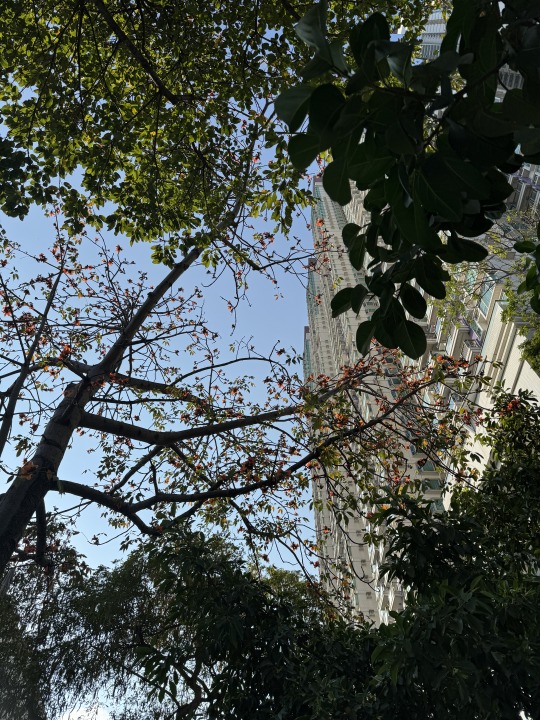
The chirping is distinct, sometimes chimed in by some lower “goo goo” sound. Then I spotted spotted doves (Streptopelia chinensis) on the taller branches. The minimum Flowers plump to the ground intermittently, making a heavy thud (do I hear the thud, or do I know because I’ve hold the heavy flower in my hand?). Other times dried flower or leave drop too, but I cannot hear a sound.
Through the leafless branches and flowers I saw a bird perching on a branch. The colour was unclear, but its crest instantly revealed its identity of a red-whiskered bul-bul (Pycnonotus jocosus). “Of course”, I thought to myself and suddenly the oppulent and delight chirping sound makes sense. This little thing was not making an mating effort, I think. It had something in its mouth, maybe food, maybe a small fibre for making nests, maybe something else but beyond what human being could understand about bird’s life. It was taking its time under the sunshine, twisting its head in small angles, as paying attention to something. Maybe it was also listening, paying attention. Is it still interested in those sounds - cars and busses and airplanes and dialogues - which are not part of their language systems? Can its brain also screen off the grumbling roaming noises that is below their feet? Maybe the ground under ourselves also makes a background noise, but we will only be able to distinguish it in the playback once we are shipped to another space with a different noise.
The recording was still going. I have the image of a casette tape recorder, when the rolling of the two white circles are visible when recording is going, rolling the thin roll of tape inside of the machine. Me looking at the bird, for a while. This attention forms a relationality, all rolled and compressed in the tape. Conserved and archived as a memory. Life is the finite resource of time, and paying attention to this bul-bul was committing one minute and ten seconds of my time, because this act of recording takes time and constant attention. And the bird, as well as myself who was watching/recording the bird, will be brought back to a renewed life in playbacks, creating new ripples. You never know what will happen when you press “record”, and when the sound is played back, everything already happened. I am fascinated by this playful misplace and the mystery of destiny.

(sorry, the bird is not in the picture)
(sorry, this post is not accompanied with a recording, as the recorder was collected by the organizer by the end of the workshop)
2 notes
·
View notes
Text
Why is string called string
Walle: 9 years old Walla: 7 years old
Walle: Mom
Me: What?
Walle: Why is string called string?
Me: What do you mean by string? (Meanwhile with my limited English ability, I was anticipating his answer. Does he mean a thread for sewing cloths? A string on a musical instrument that is stretchy and tied to tension? What about string theory? Why they use the word string? What quality of string made it called "string theory"?...)
Walle: em.....like the yellow thing you have... (... him walking to my room and wanted to show me what he means with object)
Me: Oh, that thing! You mean something like putting a few threads together and used for tie up things...?
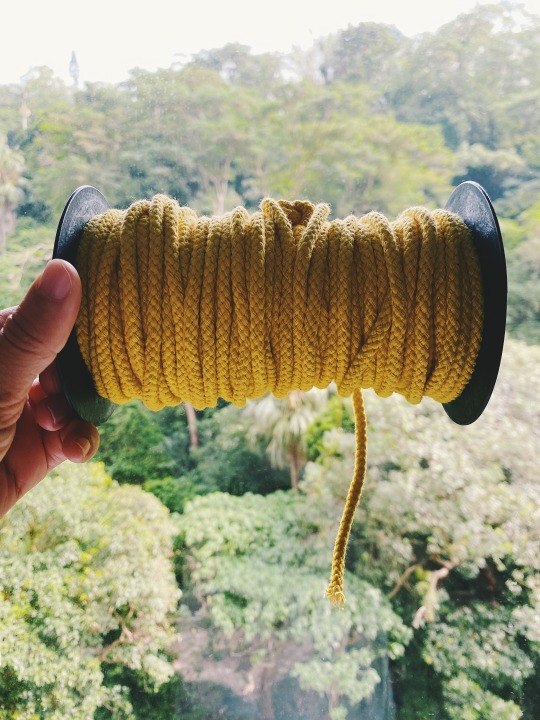
Walle: Yes
Me: That's called a rope, not a string.
Walle: Oh....Then why is it called a rope?
Me: Hum, that's actually a very good question. Actually it doesn't have to be called a rope. (... me feeling the surge inside my body... all the topics about language and meaning!)
Walle: What do you mean?
Me: It can be perfectly called "ropy", if everybody agrees to call it that way.
Walle & Walla: Ropy, haha, that's funny
Me: Or something else... but because everyone calls it rope, then we call it rope. But it hasn't to be called that way. One example is to look at the different languages ... in Chinese we call it 繩子,Japanese calls it something else.
Walle: Yeah...
Me: In fact, I think there are only a couple of words that's kind of "have to be called this way", can you guess what are they?
Walle: hummm....
Me: (cannot wait..) Mama! and Papa! Because they are the easiest sounds babies can make when they were born. Like in French and Chinese....
Walle & Walla: Hahahaha....
Me: But even that is not universal. English call it Dad... It actually is not that convenient for a baby....
Walle: But why we now have so many words?!
Me: I think the language takes thousands years to evolve and expand... if not more. Think of those hunters in the early days, they may have a certain sound for "danger". And one day they see fire, that is different, then they invent a name for the burning thing...and the other day they invented "beast"...
Walla: And "monster"....
Me: Yes, and monster. And they keep inventing names for different monsters. Like your bloop, or the "gilivaz" thing you invented.
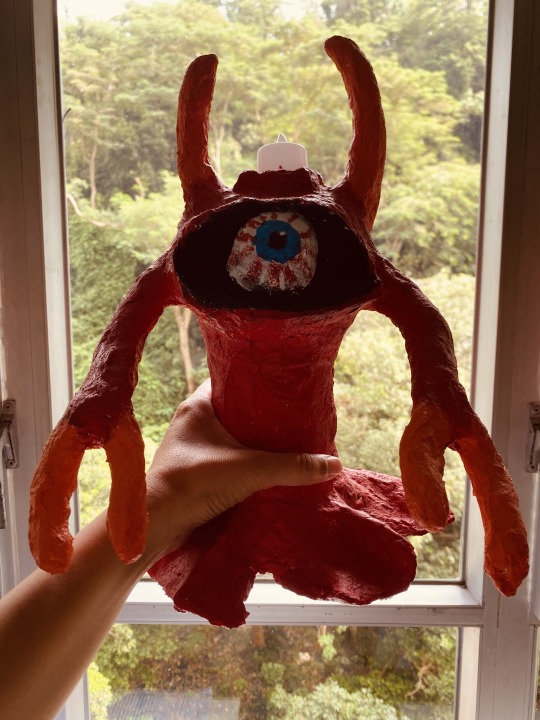
Gilivaz, by Walla
Me: And those words that are accepted and used by more people will be updated in the dictionary. See this Oxford English-Chinese dictionary (a 2005 print), it was already 6th edition. And people keep udpating them.
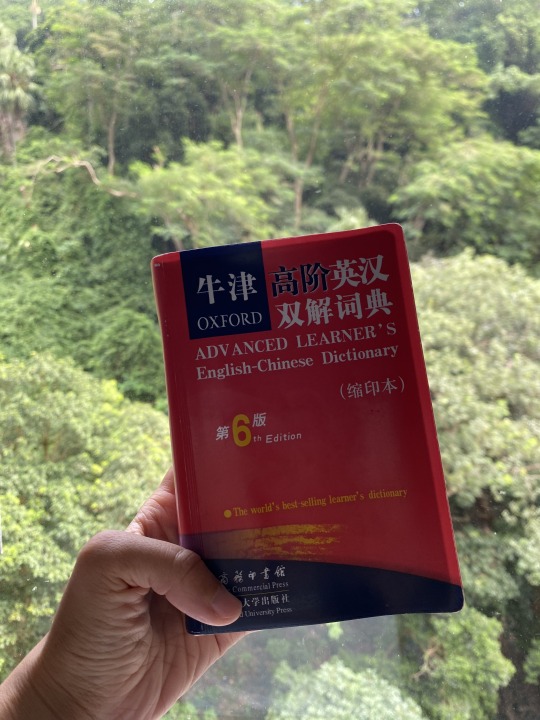
But not every word invented will be used. So it has to be widely adopted.
Walle: Yeah, like Dr. Seuss invented the word "nerd", and everybody uses that to say somebody who is weird.
Me: Not exactly somebody weird, but somebody... who's into something and ignores the other aspects of life.
Walle: Yah, there are math nerd, science nerd...
Walla: Walle you are a nerd too!
Walle: No I' not!
Me. Great example. I didn't know that before... Where did you learnt that?
Walle: From the Dr. Seuss book.
Me. Amazing...I guess the new word must meet a need to describe something new that a lot people at that moment has, and then the new word got accepted. Now so many people are inventing words in their social media....
Alright, are you prepared to get ready for your Rugby?
** Of course, great inspiration from Gregory Bateson ;)
1 note
·
View note